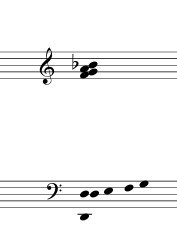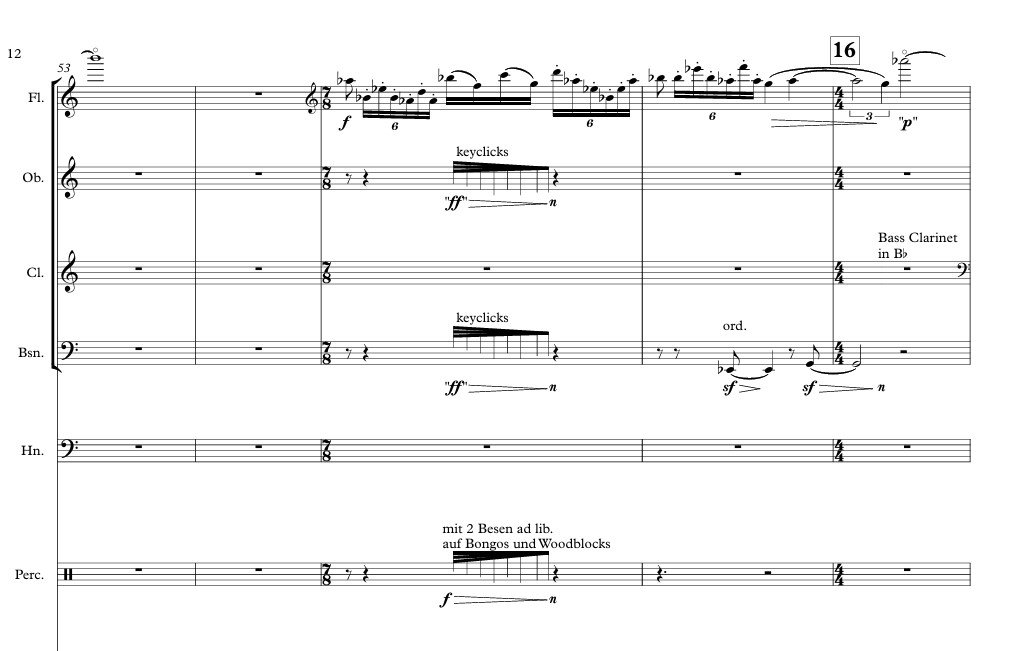Now onto the second half of the first part!
I wanted to keep and develop the idea of stacking pitches and having a sort of “clashing” gesture in the last bar of each repetition. In the following section this is done if three variations with three different pitch collections. This also marks the first tempo change to quarters equal to 108 to 112.
The pitch collection is a very straight forward Bb minor chord with all pitches from the root to the minor 6ths. Basically just stacking minor and major seconds whilst having a more driving bass line played by cello, bass and percussion.
On top of this crescending structure is a layer of a contrapuntal melodies in the horn and bassoon.
To break the isorhythmic structure and give the horn more presence some more notes are added to the melody:
As you can probably already hear in the examples there are also gestures in the upper woodwinds emphasizing the “clashing” gesture:
Near the end of the first variation we have some added aleatoric techniques in the strings as well, which will carry into the next variation. There is a tempo change, as well as a reduction in the amount of bars per repetition.
Besides the atonal material this variation is also based on a simple D Minor chord; but with inverting the direction of the buildup of pitches.
The entire material was raised by a major 3rd.
A few other variations in the woodwinds and horns, as well as having a 5/4 “interrupting” the usual 4/4 meter.
After a few repetitions the piece progresses into the third variations. Drastically upping the tempo again, changing the meter into a 3/4 with the driving bass hits (bassoon, bass clarinet, cello and bass) on the last beat of each bar, in a first it changes the build-up scheme to just having a full chord each time.3
Transposing the bass note by another major 3rd (Bb to D to F# —- essentially an augmented triad), the piece ends up in a F# maj7 b9 b13 tonality with alternating bass notes in each 4/4 bar at the end of the repeated gesture (as seen below).
The upper structure consists of wildly played woodwinds - doing arpeggios as fast as possible on the beat for flute and oboe, and fast 32th notes in the bass clarinet and bassoon towards the 3rd beat on the bar.
Again after a couple of repetitions (at rehearsal mark 36) a big ritardando is introduced, slowing the tempo from 160 to 80 (quarters per minute), but taking up the idea of stacked 4ths in the woodwinds only again.
Introducing a now - in contrast to before - very calm flute solo, isorhythmic woodwinds playing chords, and a bowed vibraphone.
The pitch collection of this part: a repeated chord made of stacked 4ths G#, C#, F# and the odd A on top (can be thought of as an A 13 omit 11 chord) followed by a E9.
In the 3rd and 4th bar we have a D9/A, B7, C#min7 - pretty standard chords.
This part will grind to a complete halt with long fermatas to prepare for the next, very agitated part.
























































